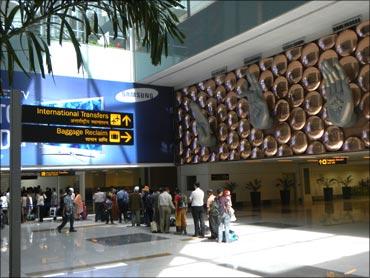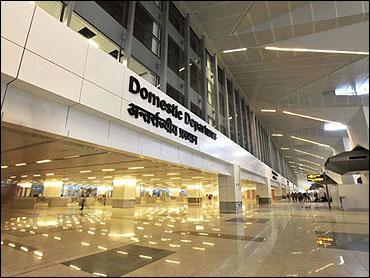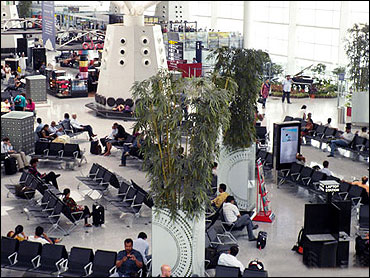BS Bureau
The Comptroller and Auditor-General's report on the Delhi International Airport Ltd (DIAL) as a public-private partnership (PPP) project makes several valid points, but presents a seemingly factual but fundamentally misleading picture of the total financial outcome.
The report says in a key summing-up that "With an equity contribution of Rs 2,450 crore, out of which the private consortium's share was Rs 1,813 crore, DIAL has got a brownfield airport for 60 years and in addition, commercial rights of land valued at Rs 24,000 crore with a potential earning capacity, according to its own estimates, of Rs 1,63,557 crore."
...
Photographs, courtesy: New Delhi International Airport
Why CAG's numbers on Delhi airport are misleading
Image: New Delhi International Airport.This calculation ignores the 46 per cent revenue share that the government gets from the project, and ignores also the need to discount future revenue streams to get their net present value (the government says that, at a 12 per cent discount rate, the NPV would be only Rs 13,795 crore).
Finally, the CAG calculation assumes that all the commercial development of land would be operational from the start of the 60-year period, whereas even six years after the project was launched, only one-fifth of the land set aside for commercial development has been so used.
...
Why CAG's numbers on Delhi airport are misleading
Image: New Delhi International Airport.In other words, the massive scam suggested by the headline-hitting figure of Rs 1,63,557 crore is accounting fiction.
It is equally nonsensical to state that the annual lease rent for 5,106 acres was just Rs 100, when the operational fact is the 46 per cent revenue share that comes to the government.
The CAG damages its credibility by failing to put figures in perspective and context, and to apply proper accounting techniques.
...
Why CAG's numbers on Delhi airport are misleading
Image: New Delhi International Airport.This is not to say that some other points in the report are not valid. It is certainly true that, in allowing DIAL to charge a development fee from passengers, the government changed the financial terms of the contract - and therefore vitiated the bidding process.
Such post-bid changes have been the bane of PPP projects, and the CAG has done well to make the point. DIAL representatives argue that the levying of a development fee was permitted under the relevant law, and that the bid documents specifically mentioned coverage under the law.
...
Why CAG's numbers on Delhi airport are misleading
Image: New Delhi International Airport.Still, the levying of the fee was an executive decision taken subsequent to the selection of the winning bid, and amounted de facto to a significant change from the bidding terms.
There are other issues mentioned in the report (like the excessive building which raised the project cost), which would have got their proper airing if the CAG had not done a grandstand act in the effort to portray an outsize scam.
The CAG recognises, fortunately, that the project has delivered an airport ranked among the best internationally, and one that was built in record time.
...
Why CAG's numbers on Delhi airport are misleading
Image: New Delhi International Airport.Additionally, it is worth noting that the project cost compares favourably with large airport projects elsewhere, and DIAL charges more moderate aircraft landing and parking charges than most comparable airports.
Finally, the Airports Authority of India is a massive financial beneficiary, from its 46 per cent revenue share.
While the CAG has done well to point to specific government decisions that merit scrutiny because they appear to have conferred undue benefit, the context is of a successful partnership between the government and the private sector.








article